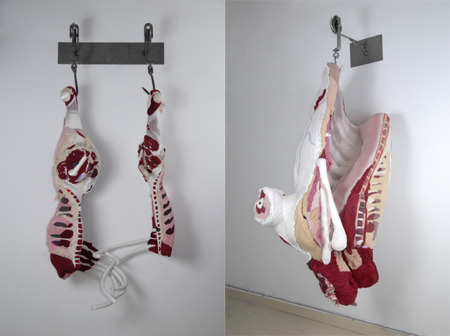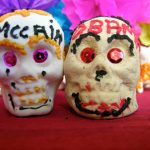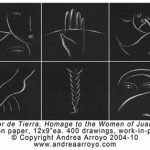Con Edison Immigrant Artist Program Newsletter, Issue No. 8
Featured Artist: Tamara Kostianovsky
Immigrant Artist Project interviews Featured Artist and 2009 NYFA Sculpture Fellow Tamara Kostianovsky
IAP: Tell us a little bit about yourself.
TK: I was born in Jerusalem, Israel in 1974 to Argentinean parents who returned to Argentina a few years after my birth. I received a Bachelor’s degree from the National School of Fine Arts “Prilidiano Pueyrredón” in Buenos Aires. In the year 2000, as the big default of Argentina’s economy was about to take place, I had the opportunity to travel to the United States to study art. I received a scholarship from the Pennsylvania Academy of the Fine Arts in Philadelphia and graduated with an MFA in 2003. In the past five years, I received grants from the Pollock-Krasner Foundation, the Pennsylvania Council in the Arts and the New York Foundation for the Arts.
IAP: Coming to the US was not the first time you migrated across national borders – Do you still consider yourself Israeli, and Argentinean, and American? Or some or none of the above?
TK: I was only two years old when my parents decided to move back to Argentina from Israel. I spent my most important formative years in Argentina, therefore I consider myself Argentinean.
IAP: How does this series of migrations in your personal background come through in your work?
TK: I think that the changes of residence put me in an eternal outsider’s position. I’m not from here, nor from there, and that gives me a certain objectivity that allows me to look at things from a distance. In the recent years, I have used starting points in my artwork that have to do with specific aspects of my upbringing in Argentina, but in the process of working with them, I tried to turn these into images that aren’t specific to any one culture but can reflect something universal, such as the concepts of migration, violence, and the relationship that we have to our bodies today.
IAP: There’s a lot of meat – real and faux – in your sculptures, as well as other non-traditional materials. What led you to use these materials? What can you do or communicate with these materials that you couldn’t achieve with, say, plaster or stone?
TK: A few years ago, reflecting upon Argentina’s history, I realized that most Argentineans were exposed to the recurring cycles of bloody rule and violence prevalent since the country’s independence from Spain. I soon understood that when violence is commonplace it becomes accepted, even expected. I also recognized that violence is often the disease of a society, and not that of an individual. After this realization, I started seeing the skinned and dismembered bodies of cattle that circulate daily through the meat markets in Argentina, not as symbolic of national pride and collective identity (as commonly perceived by the locals), but as ghosts or sacrificial lambs of a direct or indirect violence that reigns in the country. I thought that being bombarded with this violence would help me understand it or give me a thicker skin against it, so I started collecting photos of carcasses of livestock. By 2007, my studio was covered with hundreds of images of gutted pigs, butchered cows, and skinned animal heads. Around the same time, I was trying to give away some clothes that I no longer wore, but unlike the need for goods of all kinds that many experience in South America, very few in the East Coast of the United States were interested in these kinds of donations. I decided to make naturalistic sculptures of slaughtered cattle out of all of the red, white and cream-colored clothing I had. After I ran out of colors, I cannibalized the rest of my wardrobe to finish the series, which was eventually exhibited in 2008. The sculptures made out of recycled clothing allude to meat as flesh. Through the use of clothing, the animal bodies somehow become “human”. The sculptures carry the heavy weight of death, political torture, violence, and war.
IAP: When and where can our readers check out some of your work? – any upcoming shows in the area or elsewhere?
TK: Some of my most recent works will be shown at the Scion Foundation in Los Angeles, CA during the summer. I have some work up at the Contemporary Jewish Museum in San Francisco and a small collection of early works is now showing at the Jersey City Museum. Some recent pieces will travel to Basel this summer, but I’m really excited about a solo exhibition I’m getting ready for that will take place in Milan, Italy in 2011.
Visit Tamara’s Website: www.tamarakostianovsky.com





